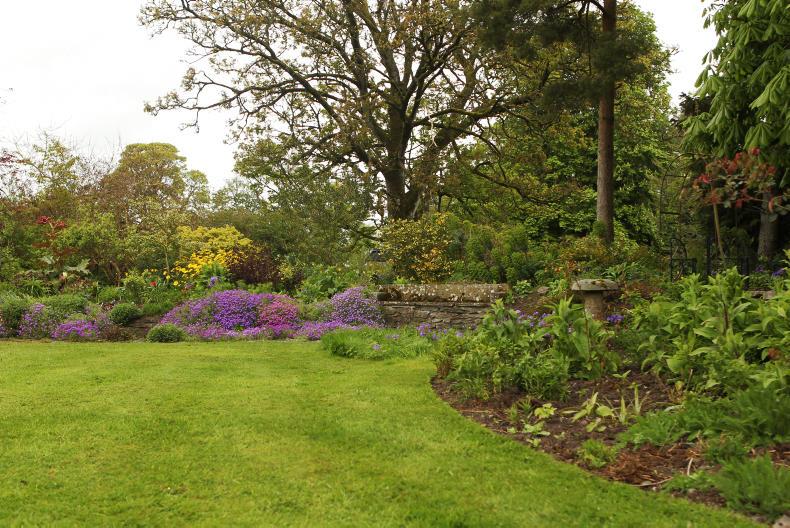1. As with any new development, the first step should be to study your site – treat it as a blank-canvas and plan all elements involved before commencing work.
It is a good idea to check the site levels and gradients and undertake all site works, including contouring and levelling, if required. This will be the only opportunity to take out those humps and hollows.
2. The next step to look at is drainage. This is often over-looked when planning a new lawn. It is inevitable that your lawn will be subject to periods of wet weather, so it is important to check the drainage of the site before moving any further. This is an ideal time to assess the drainage requirements of sites just before the ground dries out fully. Ideally, the site should be ploughed, cultivated or subsoiled as this will alleviate compaction in the top 250mm of the soil layer.
Compaction could lead to the formation of an impermeable layer, which will not allow water to drain. If a drainage system is necessary, check the outfall suitability and install either a herringbone or grid configuration system.
All drains should be backfilled with appropriate, washed aggregate to within 250mm of the surface and covered with a blinding sand layer.
3. Before thinking of putting in the green stuff, your next step should be to ensure your soil is in the correct condition. Poor soil will ultimately lead to poor grass growth. Here, the nutrient levels and composition of the soil should be examined. To do this properly, have a soil test undertaken. The optimum levels of P&K are 8ppm to 10ppm and 100ppm to 120ppm, respectively. A pH test should also be undertaken and lime should be applied at the appropriate rate, if required. A balanced fertiliser may be needed and the application rate for this will be guided by the soil test results.
4. Now it’s time to talk grass. The first decision is whether to seed or turf the lawn. If we are to look at the seeding process, it might be best to carry this out in the autumn to minimise weed invasion. However, spring seeding can also be carried out and it is important to use new seed when doing so. Similarly, do not compromise on the seed quality. The more expensive mixtures tend to contain better grass varieties. For the actual seeding process, divide the seed quantity in two and seed the area in two directions. The seeding rate can vary depending on the final quality that is required, see Table 1.
5. Once the lawn is seeded, it should be raked to incorporate and cover the seed. However, if a proper seeder is used, this is not required. At this point, it may also be rolled using a light roller, making sure the soil is very dry before doing so. Alternatively, the grass should be allowed to germinate and grow to a height of 50mm to 75mm, any small stones and pieces of debris removed and then rolled. At this stage, a 20cm to 23cm diameter concrete pipe can be used. The pipe is not too heavy to manipulate and pushes small stones, clods and other debris into the surface to make it smooth.
6. Depending on the ensuing weather, irrigation may be required. If irrigation is required, care must be taken to ensure either seed or seedlings are not washed out of the ground, so a fine sprinkler is recommended. Irrigation is unlikely to be required if the lawn is seeded in the autumn, as winter rains are generally never too far away. It should be noted that it very important to stay off the lawn during seed germination and indeed during the period of initial growth.
7. After rolling, allow the grass to straighten back up (after a few days) to 75mm to 80mm before its first cut. Allowing the grass to grow to this length stimulates root growth and makes the grass more competitive against weeds. Do not remove more than one third (25mm to 27mm) of the grass at this time as this could interrupt root growth and restrict rapid establishment.
Gradually reduce the height of cut until the desired level is attained. For a very fine lawn where you are cutting with a cylinder mower, this can range between 15mm and 30mm. For a utility lawn, comprising of Lolium perenne, for example, the height of cut can range between 25 and 50mm.
8. Finally, do not apply herbicides to the lawn during the first six months as their application is associated with lawn damage. Very often, routine mowing will effectively control all but the most difficult weeds during this period.






 This is a subscriber-only article
This is a subscriber-only article













SHARING OPTIONS: